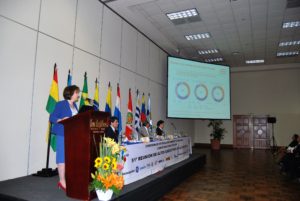From a global perspective, in the last 10 years the demand for electricity in the world has exploded exponentially as a result of economic and population growth and the economic growth in developing countries such as Bolivia where people now have more access to electricity.
She also added, "the use of hydroelectric power and its export introduces a greater degree of predictability and stability in the economy unlike fossil fuels like gas and oil that have different cycles in their prices. The world's 10 largest generation stations in the world are nine hydroelectric and one nuclear power station in Japan and is currently not operating, so we have covered the entire larger area."
However, with every hydroelectric project according to its characteristics there are both positive and negative environmental and social impacts on plants, on fish, evaporation of lakes, and in some cases even the relocation of ethnic groups.
But each of these problems and challenges have generated innovative ways of resolving and adapting them through use of new technologies. It is for this reason that hydroelectric generation must be viewed from a systemic point of view in order to induce the least possible impact.
The Bolivian Ministry of Energy headed by Luis Albert Sanchez, then discussed the comparison between the development of alternative energies such as solar and wind compared to hydroelectrics, of which Ms Van der Westhuizen explained that renewable energies are complementary, and that it is difficult to develop only wind and solar projects without having a stable generation such as hydroelectricity.
Because in hydroelectric generation water is stored and consequently energy, a situation which does not occur with other energies, allows to balance the electrical system and is not paid for fuel.
Referring to the recent opposition by protestors to hydroelectric projects, such as the construction of dams in the El Bala and El Beu canyons on the Beni River, Ms Van der Westhuizen commented, "not only in Bolivia, do these groups try to focus on a very specific issue and do not analyse the problem in a systemic way, especially in developing countries.“It is important that countries view sustainability within a much broader scope that includes the financial sustainability of the country, the economic sustainability of the community and the sustainability of society.”






